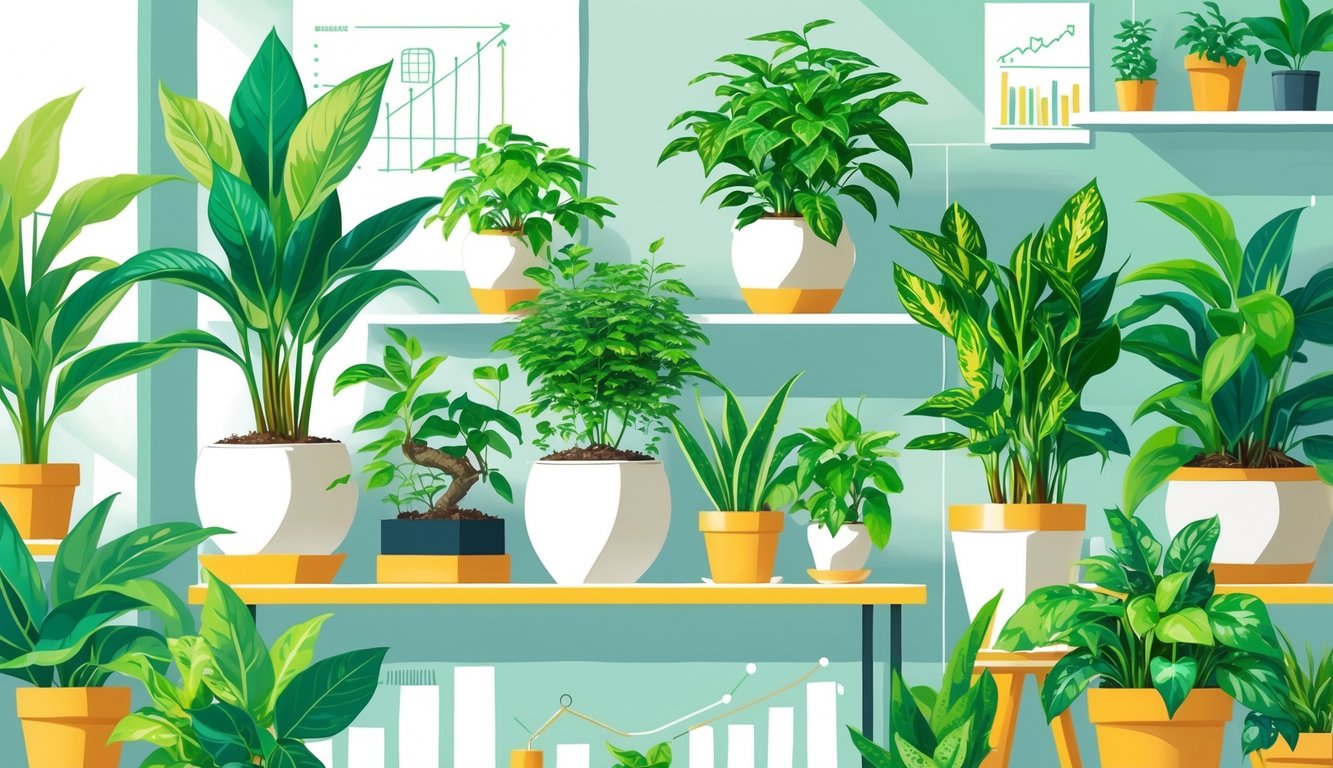
So, I’m looking at this crumpled receipt from my last nursery haul—snake plants, overhyped and definitely not cheap. Why are people at the farmers’ market dropping way more cash than I just did? My financial advisor (don’t ask, it was a weird meeting about mutual funds) once blurted out that, apparently, some houseplants can give you a better return than half the so-called “high-yield” accounts if you actually know what you’re doing and don’t chase whatever’s trending on Instagram. No, seriously. I’ve made more flipping a healthy monstera cutting than I ever did letting cash rot in a savings account. Crop investments? Please. My cousin’s still ranting about his “unpredictable” harvests like it’s the next big thing.
Let’s be real—nobody on those finance podcasts tells you this: If you buy the right plants, chop them up at the right time, and actually know which varieties have waitlists (yeah, that’s a thing), you’re basically doing insider trading but with way more mess and way less paperwork. Forget “plant parent” nonsense. Think: Who’s buying up rare philodendrons on Etsy? You’re staring at a mini-arbitrage market, and it’s probably happening right next to your toaster. I sold a rooted cutting I’d given up on for $40. I mean, why?
Meanwhile, my aloe outperformed my IRA one year. I wish I was joking. Sure, there was a viral spike, but still. If you want returns and can’t stand the idea of the stock market’s mood swings, I swear nothing beats watching a propagation tray fill out—unless you’re suddenly panicking about shipping permits to Denmark at 2am. Been there.
Why Financial Advisors Recommend High-Yield Houseplants for ROI

I still can’t believe the spreadsheet I made after that Zoom call—some plants doubled in value in six months. My “high-yield” savings? Not so much. Shipping fees? Don’t get me started. Advisors are catching on: Houseplants aren’t just another boring bank product. If you don’t drown your Monstera, you might actually see real compounding. Maybe.
Connecting Plant Investments With Financial Goals
Look, there’s no ETF for variegated monstera leaf prices (yet, but give it time). Ask any advisor who actually knows what’s up with high-yield investments. They’ll admit houseplants don’t fit the usual financial boxes. But the resale markets, auction groups, even local swaps—they’re basically micro-investment engines if you squint and map them to real goals. Saving for a trip? Paying down a card? It’s not about humidity; it’s about how fast you can flip a cutting for cash.
I read a CFA’s blog last winter—guy was arbitraging rare anthurium cuttings to offset brokerage losses. Not kidding. So, the cash flow from propagating and selling high-demand plants can end up back in your “real” investments or emergency fund. Not as chill as a bond ladder, but find me another asset that multiplies while you sleep (unless fungus gnats show up and ruin everything).
Comparing Houseplants to Traditional Low-Risk Investments
Don’t talk to me about savings rates unless you want to see my hydroponic basil auction receipts. Online banks offer 4–5% APY on their high-yield savings accounts, but rare houseplants? Some of those doubled or tripled in price in a single quarter, at least according to plant Discords and resale sites.
Of course, plant prices can tank overnight (market saturation, or TikTok moves on to frogs or something). Liquidity? Risk of pests? Someone knocking over your $80 pot during a party? It’s all there. Honestly, it’s like holding REITs, but you get actual leaves and can propagate your “portfolio.” I still check the USDA’s restricted list so I don’t get blacklisted for interstate shipping. Who knew compliance was a thing for houseplants?
Top High-Yield Houseplants for Maximum Returns

It’s ridiculous how snake plants keep popping up on every “safe investment” list. Blink and there’s another Instagram post about pothos margins. Fast growth and easy resale, that’s where the cash is. These aren’t just hobbies—they’re weirdly reliable investment pieces, and anyone who’s been around knows it.
Most Profitable Varieties
Everyone yells “monstera,” but honestly, the Monstera Thai Constellation is where the real money is. I’ve watched mediocre cuttings hit $80, and mature plants go for way more. Planters Etc. tries to keep up, but their numbers are always behind.
Golden pothos (epipremnum aureum) is everywhere, impossible to kill, and somehow still sells for a premium—especially if you slap “variegated” on the tag. Kadupul Flower? Basically a unicorn, but sansevieria is the real office MVP—fast ROI, low effort, and almost impossible to kill. Pepperomia, philodendron, peace lily—all good for quick flips. Herbs and dwarf fruit trees? Eh, unless you’re running a produce stand, don’t bother.
Cost Breakdown and Expected ROI
If only someone would just put dollar signs on pots. It’s chaos, even for people who claim to know what they’re doing. Buying a Monstera Thai Constellation? Expect to drop $30–$50 for a healthy one. Flip it at the right time and you might get $70–$100. Margins are wild—50–110% if you dodge pests.
Pothos and snake plants? Cheap to buy, $5–$12 for starts. Mature pots can go for $25, sometimes $40 if they’re “bushy,” but good luck finding those wholesale. Factor in soil, fertilizer (don’t get me started on overpriced “organic” blends), basic pots—if you’re smart, you’ll see profit after four months. Less if you use hydroponics or some fancy vertical rack.
Advisors love to brag about diversification, but honestly, these green “assets” add liquidity and low volatility to a micro-portfolio. Some guy at Planters Etc. said, “Rare aroids outperformed tech stocks for us in Q4 2023.” I mean, I’m not putting my 401(k) into pothos, but if I bought every plant that “pays for itself,” I’d be sleeping in the jungle.